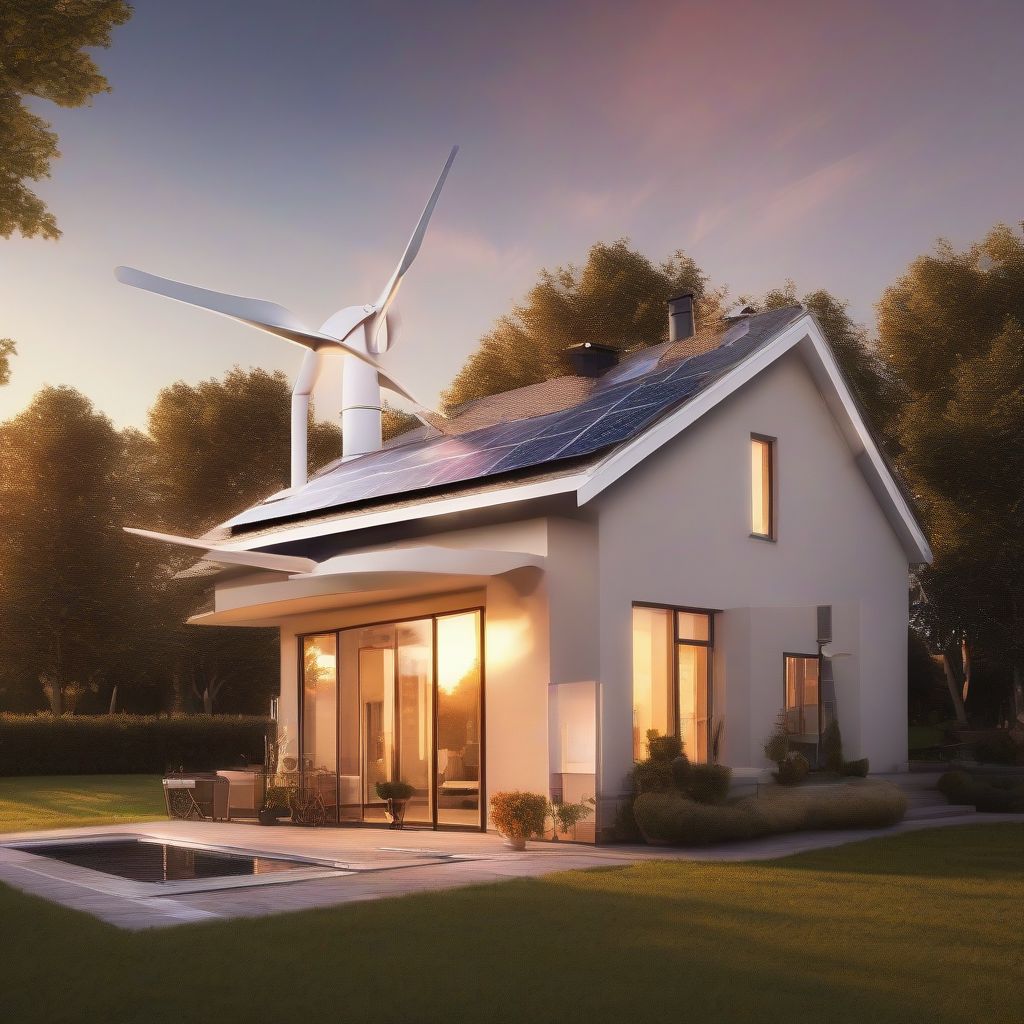Imagine a gentle breeze rustling through the trees, not just a sign of nature’s beauty, but also powering your home. Harnessing the wind’s energy is no longer a futuristic dream but a tangible reality for homeowners. With rising energy costs and growing environmental concerns, residential wind turbines offer a sustainable and cost-effective way to generate clean energy. This comprehensive guide will explore the best wind turbines for residential energy generation, empowering you to make an informed decision for your home.
Understanding Residential Wind Turbines
Before diving into the best models, let’s clarify what residential wind turbines are and how they work. These turbines are smaller than their commercial counterparts, designed for individual homes or small properties. They capture the kinetic energy of the wind and convert it into electricity, reducing your reliance on the grid.
How Do Residential Wind Turbines Work?
The wind turns the turbine’s blades, which are connected to a rotor. The rotor spins a generator, which produces electricity. This electricity is then sent to your home’s electrical system, either directly powering appliances or stored in batteries for later use.
Types of Residential Wind Turbines
There are two main types of residential wind turbines:
- Horizontal-Axis Wind Turbines (HAWTs): These are the most common type, resembling traditional windmills. They are efficient and generally quieter than vertical-axis turbines.
- Vertical-Axis Wind Turbines (VAWTs): These turbines have vertically oriented blades. They are better suited for areas with turbulent or multi-directional winds but are generally less efficient than HAWTs.
Choosing the Right Wind Turbine for Your Home
Selecting the best wind turbine involves several key considerations:
Assessing Your Wind Resource
The most crucial factor is your location’s wind speed. Turbines require a certain minimum wind speed to operate effectively. You can use online resources, such as the National Renewable Energy Laboratory’s wind maps, to assess your area’s wind potential.
Determining Your Energy Needs
Evaluate your household’s average energy consumption. This will help you determine the appropriate turbine size and power output to meet your needs.
Considering Local Regulations and Permits
Check local zoning ordinances and permitting requirements for installing wind turbines. Some areas may have restrictions on height or noise levels.
Evaluating Turbine Features and Specifications
Pay attention to factors like:
- Rated Power: The maximum power output of the turbine at a specific wind speed.
- Cut-in Speed: The minimum wind speed required for the turbine to start generating electricity.
- Cut-out Speed: The wind speed at which the turbine shuts down to prevent damage.
- Durability and Warranty: Look for turbines with robust construction and comprehensive warranties.
- Noise Levels: Consider the noise produced by the turbine, especially if you live in a densely populated area.
Top Residential Wind Turbines on the Market
While the “best” turbine depends on individual circumstances, here are some highly-rated models:
Bergey Windpower
Bergey turbines are known for their durability and performance. They offer a range of models suitable for different wind conditions and energy needs. “Investing in a Bergey turbine is like planting a tree that bears energy,” says a satisfied customer, highlighting the long-term benefits of this brand.
Skystream
Skystream turbines are designed for residential use, offering a sleek and compact design. They are known for their quiet operation and efficient energy generation.
Whisper
Whisper turbines are another popular choice for homeowners, offering a balance of performance and affordability.
Benefits of Residential Wind Turbines
Investing in a residential wind turbine offers several compelling advantages:
Reduced Energy Bills
Generate your own electricity, significantly lowering or even eliminating your monthly energy costs.
Environmental Friendliness
Harness a clean and renewable energy source, reducing your carbon footprint and contributing to a sustainable future.
Energy Independence
Become less reliant on the grid, increasing your energy security and resilience.
Increased Property Value
A wind turbine can enhance your property’s value, reflecting its eco-friendly features.
 Residential Wind Turbine Installation
Residential Wind Turbine Installation
Conclusion
Harnessing the power of the wind is a smart investment for homeowners seeking a sustainable and cost-effective energy solution. By carefully assessing your wind resource, energy needs, and local regulations, you can select the best residential wind turbine for your home. Remember to research different models, compare features, and consider long-term benefits. Embracing wind energy not only reduces your energy bills but also contributes to a cleaner and greener future. We encourage you to share your thoughts and experiences with residential wind turbines in the comments below! Are you ready to take the next step towards energy independence? Explore our resources and guides on renewable energy to learn more.



